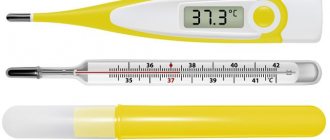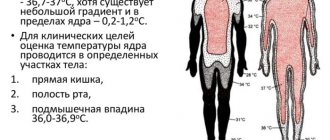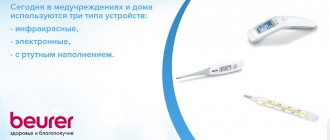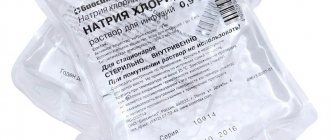Human body temperature is quite rightly considered one of the main indicators of health. The body of any warm-blooded creature maintains an optimal temperature level, regardless of external conditions. A drop in temperature or an increase in temperature is always a reason to think about the reasons.
How to determine the presence of fever without a thermometer: signs of high temperature
Of course, it is difficult to determine heat with high accuracy without measuring equipment. The average person feels a temperature above 38 degrees, so if the patient has a slight increase, you are unlikely to detect it. Only a thermometer can do this. But if a person has a strong fever that needs to be brought down, it is quite noticeable.
Signs of fever:
- Rapid breathing. It is quite heavy, intermittent
- Rapid pulse. Typically, people with a fever have beats per minute greater than 100
- The appearance of an unhealthy blush. It is difficult to notice if a person has dark skin. Usually seen on people with fair skin
- A person may experience short-term convulsions. This usually happens when the temperature rises to 39 degrees.
- During a fever, the skin may be sticky and wet.
- A person is constantly thirsty and feels dry
- Chills may occur. Despite the fact that the room temperature is comfortable, the patient is shaking and constantly wants to cover himself with a warm blanket or put on a large amount of clothing
- Cold extremities. This often happens in children with cold fever.
Heat
How to choose a thermometer
It would seem that it’s so difficult to buy a thermometer? But, faced with the need to choose, it is easy to see that there are plenty of difficulties. Indeed, a threefold difference in cost for outwardly almost identical devices will confuse anyone, and the reason for such a price “run” is sometimes difficult to understand. How to choose a thermometer that optimally combines price and functionality?
Your home medicine cabinet is incomplete without a good thermometer. The pharmacy will offer you three main types of thermometers: mercury, digital and infrared. Let's look at them one by one.
Mercury thermometers
Price. "+"
They cost mere pennies. They can be changed much more often than gloves, but is the game worth the candle?
Accuracy. "+"
As old as time, mercury thermometers have very high accuracy. By measuring the temperature using a simple device, you can be confident in the result. No amount of confusion will make a mercury thermometer lie and give incorrect readings.
Ergonomics. "–"
The shelf life here is unlimited. But as simple and reliable as mercury thermometers are, they are also fragile. One single careless movement, and the thin glass breaks into pieces, and dozens, if not hundreds of small mercury balls appear, striking in the perfection of their form. How many young, and quite experienced mothers, at the sight of a metal scattering, fall into hysterics and start calling the SES, chemical laboratories and other authorities with a request to urgently come and dispose of the terrible contents of the thermometer.
Note.
In fact, the amount of mercury in a thermometer is modest, and you can only become poisoned by eating silver balls for breakfast or lunch. But this consolation hardly reassures the owner of a mercury thermometer during “debriefing”. Moreover, flights happen with enviable regularity. Meanwhile, the market has many offers of durable and affordable thermometers that are not suitable for water, fire, or copper pipes.
Electronic (digital) thermometers
Price. "+/–"
They cost tens of times more than mercury ones, which in itself is not surprising.
Accuracy. "+"
Whatever they say about electronic thermometers, in fact they are more than accurate in measurements. Where do rumors about insufficient accuracy come from?
Note.
Consumers often complain that they measured, as expected, before the sound signal, but in response only incorrect readings. But in fact, the problem is not in the device, but in a banal failure to comply with the instructions.
Most electronic thermometers measure temperature for several minutes after the beep. Manufacturers do not like to indicate this nuance directly and “in person”. That’s why advertising brochures feature large letters calling for you to find out your temperature in a matter of seconds. And only in the fine print instructions can inquisitive consumers glean details that bring them back to earth.
It turns out that thermometers that loudly promise to measure temperature in 60 seconds do so, according to the same instructions, “from 1 to 5 minutes.” The beep, which is often mistaken for notification of the end of a process, typically indicates that the measurement is nearing completion but is not yet complete. To get accurate results, you need to hold the thermometer under your armpit for at least a couple more minutes, or even more (but this is still faster than a mercury thermometer).
Some companies have launched the production of thermometers with touch tips, the special design of which allows you to measure temperature even faster. According to manufacturers, the waiting time for the result is about 10 seconds. But, again, in the instructions for such devices there is a modest note that 10 seconds can stretch to 2 minutes.
Ergonomics. "+"
First of all, electronic thermometers are very durable: periodic replacement of batteries can extend their service life for many years. For example, my copy, which has long passed its second decade, still regularly measures temperature. And this despite the barbaric attitude of my four children, each of whom did their best to incapacitate him. Manufacturers promise that electronic devices can work properly for at least two years, and some models even have a lifetime warranty.
Electronic thermometers can also have a flexible tip. Even in the armpits it is much more convenient to place a device that adapts to the natural curves of the body. But modern electronic thermometers can work in other “conditions” - they measure temperature orally (behind the cheek and under the tongue), rectally, vaginally and in the groin area.
Soft tip models are ideal for taking temperature in newborns. In addition, in a house with small children, a moisture-resistant device that is protected from accidental water procedures is much more likely to “survive.” There are also thermometers for infants, made in the form of a pacifier and measuring the temperature orally. However, their price is quite high, and the likelihood that the child will be happy to “use” the measuring pacifier, on the contrary, is small.
Another modern technology is gold-plated tips. They are intended for people who are allergic to nickel, which is commonly used to make thermometers.
Infrared (forehead/ear) thermometers
Price. "–"
The latest achievements in measuring technology are amazing at a price that is several times higher than the cost of an average electronic device.
Accuracy. "+/–"
Infrared thermometers promise to take a full second to measure the temperature in your ear or forehead. But at the same time, measurement accuracy is clearly not their strong point. And it's not just that the application is not long enough.
Note.
The instructions for use contain alarming information. It states that measurements should be taken in the ear only half an hour after eating, exercising or taking a bath. And the results of measurements on the forehead may be completely inaccurate due to the influence of many factors.
Ergonomics. "+/–"
These devices certainly look elegant. They can even be used as a “stylish clock” or a room thermometer. But if you take into account the very “blurred” ability of the device to perform its immediate task - to measure the temperature of the body, and not the environment, then you can’t help but think about replacing it with a stylish radio, for example... By the way, the warranty period of the infrared device lasts only a year.
Therefore, weighing the pros and cons of mercury, electronic and infrared thermometers, the overwhelming number of buyers (including me) join the ranks of owners of electronic devices. And they close the topic of buying a new thermometer for years to come.
Marina Pozdeeva
Photo thinkstockphotos.com
Products by topic: [product](digital thermometer), [product](infrared thermometer)
How to determine the temperature without a thermometer in an adult or child?
To determine the presence of fever, it is useless to touch the arms and legs. Because they can be absolutely cold. This happens in children.
Methods:
- The places that most accurately tell you about an increase in temperature are the forehead, neck, armpits, under the knees, and also the tummy in children. It is these places that should be touched in order to determine the presence of fever.
- Touch what you need with your hands. For greater accuracy, you need to touch the hot area with your lips
- Children's eyelids can be touched. Place your lips on your baby's forehead and feel. Usually a temperature rise above 37.5 degrees is felt
- Signs of high fever are nausea and vomiting. There is weakness and lethargy
- The most interesting thing is that many children, even at a temperature above 38 degrees, can run around and be quite cheerful, but at the same time other symptoms of fever remain
- Pay attention to the color of your child's urine. The fact is that when the temperature rises, adults usually drink large amounts of water, which dries them out. Young children may not ask for liquids. Therefore, you need to give your child something to drink from time to time.
- Look at the color of his urine. As the temperature rises, the body becomes dehydrated and moisture evaporates quickly. In this case, the color of the urine becomes bright yellow, even orange. If this occurs in your child, it indicates a fever.
- One of the most dangerous symptoms of fever is seizures. In children under 5 years of age, convulsions often occur when the temperature rises to 39 degrees. If they last no more than 3 minutes, then there is nothing to worry about. But usually the parents of such children have antipyretic and special anticonvulsant drugs in their medicine cabinet. They must be given to the child because it can be dangerous.
- If you have seizures that last more than 3 minutes, you must urgently call an ambulance, because the phenomenon is neurologically dangerous. This may affect brain function
Child's temperature
Axillary method
The armpit temperature is mainly measured in Central and Eastern European countries. This is a fairly accurate method of measurement, provided that the thermometer is placed deep, pressed tightly, and the measurement is taken for at least 7-10 minutes.
Five myths about temperature. Where to measure and which thermometer is more reliable? More details
Features : This measurement method is not suitable for obese people. Adipose tissue serves as a layer between the thermometer and the body, so the thermometer readings cannot always be trusted. An axillary measurement will also be inaccurate if the armpit is sweaty or if the person took hot or cold water before the measurement.
The normal temperature in the armpit is 36.0-36.9 degrees.
How to understand that you have a temperature without a thermometer: when to see a doctor?
Symptoms that require calling an ambulance:
- You should definitely call an ambulance if the convulsions last more than 3 minutes
- Along with a hot forehead, as well as the area under the knees, there is severe chest pain
- The person has difficulty swallowing and is vomiting and will not stop
- There is blood in the sputum or vomit or diarrhea
- If a person is hallucinating, delirious, has a high fever that causes sweat to appear on the surface of the skin
If you have any of these symptoms, you need to call an ambulance. If you feel that a person is hot and there are symptoms that indicate a fever, that is, the person is chilling or feels weak, muscle pain, then you can give the person an antipyretic. Nowadays there are a large number of drugs in the pharmacy. It is worth choosing according to the person’s condition.
Gives you a fever
Features of using contactless devices
It would seem that this is the ideal solution, convenient and functional. But, since this is a complex electronic device, many factors influence its accuracy. Manufacturers of even the most expensive devices claim an error of + 0.2°C if all conditions for correct measurement are met. If you violate even one, the deviation will be even greater!
Requirements for working conditions:
- the device correctly measures temperature only in certain conditions (approximately 16-40°C ambient);
- the device should be in this temperature mode for 30 minutes;
- the person being measured must be in the same temperature conditions for at least 10 minutes, and preferably 30;
- at least 30 minutes should also pass after eating, bathing, or physical training;
- The forehead skin should be clean and dry. If cream, dirt, sweat, water is present this may also change the readings;
- The radiation sensor window must be clean and not contaminated with anything (it is recommended to wipe with alcohol. Water is prohibited!);
- the distance between the device and the skin during measurement must coincide with the instructions (3-5-7 cm depending on the model);
- prevent the ingress of warm currents from heaters and batteries;
- Do not hold it in your hand for too long, because this may cause the device to heat up.
If for some reason the requirements are not so stringent, honest manufacturers increase the error in the instructions, there is no question of Chinese devices that have not passed certification.
Antipyretic suppositories for children and adults
It is best to administer suppositories to children, because high fever is often combined with vomiting. Even though there are no intestinal infections, small children with a sore throat cough violently, which can also cause severe vomiting. In this case, giving an antipyretic orally is useless, because the child will still vomit the medicine. In this case, the ideal option would be to use candles.
List of antipyretic suppositories for children and adults:
- Ibufen
- Efferalgan
- Analdim
- Tsefekon
- Nurofen
- Panadol
Please note that doctors do not recommend lowering the temperature below 38 degrees. Because the body must fight it on its own. If your child is fainting at a temperature of 37.5, then he needs to be given an antipyretic. It all depends on the condition of the child. For children who develop seizures, even with a slight increase in temperature, it is recommended to give an antipyretic in order not to provoke seizures.
Gives you a fever
Oral method
“The most popular way to measure temperature in the USA,” says Tatyana Muravskaya, an infectious disease doctor at St. Barnabas Hospital (New Jersey, USA) . “Clinical trials and medical practice in the United States have shown that when measuring temperature in the mouth, the indicators are much more accurate than when measuring in the armpit.”
Article on the topic
The history of the creation of the thermometer: how was the first thermometer invented?
Features : When measuring temperature, it is important to ensure that the tip of the thermometer is located under the tongue and the mouth is closed.
It is also important not to smoke or drink hot or cold drinks 5 minutes before the measurement. The normal value of oral temperature is 36.0-37.4 degrees.
How to measure your own temperature without a thermometer?
Below is a simple technique that will help determine fever without measuring equipment.
Methodology:
- One of the most common options is to cup your palms
- Leave a small gap and exhale forcefully into it
- If the wings of your nose feel intense heat, it means you have a fever.
- In addition, you can measure your pulse. Usually people know what the standard resting heart rate is.
- If it is 30 beats more, then most likely the temperature is approaching 39-40 degrees. This is a significant increase in heart rate, which is usually triggered by an increase in temperature
- If you suspect a high temperature, you should try to move your eyes up, down, right and left. If this is difficult to do and the eyelids and eye muscles hurt terribly, this indicates a high temperature
- In addition, joint pain and chills are observed. An unhealthy blush may appear
- At the same time, the frequency of breaths increases, reaching more than 30 per minute.
Chills
All these signs indirectly indicate fever. You can find out the exact value only with the help of a thermometer.
High temperature - what causes it?
Most often, fever is a sign of an inflammatory process that occurs as a result of viruses and bacteria entering the body that can cause disease. Decreased immunity is another reason.
However, there may also be non-inflammatory factors. For example, overheating in the sun (sunstroke), early pregnancy in women, psychological or physical stress, and a number of other situations.
Various chronic diseases can also be the cause. At the same time, people are usually well aware of their health problems.
And, nevertheless, a gradual or rapid increase in temperature indicators should in no case be left to chance. It is imperative to make an attempt to measure the temperature even without a thermometer.
What to do in case of high temperature?
In children, an increase in temperature is often accompanied by convulsions, so you should carefully monitor the baby’s condition so that you can promptly seek qualified help.
It is recommended to call an ambulance if the duration of the convulsions is three minutes or more, as well as in the situation if this symptom is accompanied by vomiting, stiff neck, breathing problems and severe drowsiness.
Qualified help should not be ignored even if we are talking about a sick child under the age of 2 years, as well as if disturbing symptoms persist for 24 hours or more.
Calling an ambulance is strongly recommended even when an increase in temperature is accompanied by severe pain in the abdomen, chest, confusion or hallucinations.
We recommend reading: Bronchitis in children: treatment, diagnosis, causes and symptoms
To normalize the condition, you can use medications designed to reduce temperature indicators. It is also important to drink as much fluid as possible, ensure regular and nutritious meals, and give preference to bed rest so that the body has the opportunity to recover faster.
Signs of low temperature
A decrease in temperature below normal (hypothermia) is a sign of weakened immunity, cancer pathologies, dysfunction of the adrenal glands and thyroid gland. A slight or short-term decrease in indicators in children is considered normal; the problem often occurs with hypothermia and severe fatigue.
Symptoms of hypothermia:
- increased irritability, nervousness, hysterics;
- general weakness, dizziness, drowsiness, lethargy;
- headache, fainting;
- decreased blood pressure, slowed heart rate and breathing;
- refusal to eat;
- pale skin;
- chills;
- cold sweat
Often, a low temperature persists for some time after recovery. This indicates that the body has spent a lot of energy fighting the disease. Increase the amount of fruits, vegetables and greens in your child's diet. Or ask your pediatrician to choose an effective vitamin complex.
Hypothermia, like hyperthermia, often occurs in children during the period of active growth, in adolescence, and in babies under one year old.
A decrease in values may also be a reaction to vaccination. Reduced temperature readings are observed in premature babies.
A decrease in readings below 36 degrees, or if the readings do not exceed 36.5 degrees for a long time, is considered dangerous.
The second method “according to tempering colors (tarnish)”
When the metal is heated from 200 to 300 degrees, tarnished colors appear on a surface cleaned with emery (table “Tempering Colors”) due to the formation of oxide films of varying densities; Each film reflects rays of only a certain color.
| Holiday color | Heating temperature, °C | |
| Light yellow | 220 | |
| Straw yellow | 240 | |
| Brown-yellow | 255 | |
| Red-brown | 265 | |
| Purple red | 275 | |
| Violet | 285 | |
| Cornflower blue | 295 | |
| Light blue | 315 | |
| Grey | 330 |










